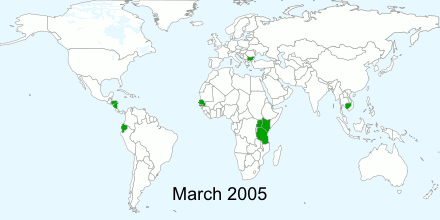
This simple chart says a lot about why Kiva is so great. $88 million is the total amount of money loaned, as of a couple of weeks ago. That $88 million is mostly from developed nations. For example, the nations with the most lending actions are the US (70%), Canada (9%), and the UK (3%). To calculate what that money is really worth to the people who receive it, I took the per-capita GDP of the lender's country and divided it by the per-capita GDP of the entrepreneur's country. I used the purchasing power parity GDP, so it's not just an exchange rate calculation but an attempt at taking the cost of living into account. The average ratio is 19.7, which when multiplied by $88 million results in the incredible amount of 1.75 billion dollars.
There are certainly many possible issues with this calculation. How accurate are the GDP numbers? I used the values from the CIA factbook, but the values from the International Monetary Fund and the World Bank aren't drastically different. And what does per-capita GDP PPP really mean, and is it accurate to say that one US dollar is worth almost 30 times
as much in Kenya? And there are also some possible issues with the calcuation of the average. Kiva understandably doesn't release how much money each person lends, so I have to weigh the average based on the number of loans made per country, not the actual amount of money loaned.
But even if all my numbers are way off there's still a lot of room to spare in that $1.75 billion to still be impressive.
This is the main reason why I lend money through Kiva instead of giving money to local charities. By some measures, Kiva is clearly the most efficient use of my money. If all else is equal, I'd rather give millions of dollars than thousands of dollars.
